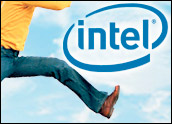
Intel is rumored to be considering entering the pay-television service market. The chipmaker has reached out to media companies and cable channels as part of its research, according to news accounts.
The service would be based on a Web-connected set-top box that could offer both streaming TV and video-on-demand programming, reported The Wall Street Journal.
Intel did not respond to our request to comment for this story.
Google, Microsoft and Who Else?
Intel is not the only nontraditional provider to eye this space. Last month, speculation arose that Google was entering the cable television market after it filed applications seeking franchises to provide video service in Kansas City, Mo., and Kansas City, Kan.
Microsoft has also been rumored to be considering such a move, independent tech analyst Jeff Kagan told the E-Commerce Times. “And who knows who else? Yahoo possibly and Apple almost definitely.”
A Reinvention of the TV Business
The reason for the interest, Kagan explained, is that the television business is ripe for disintermediation and reinvention. More than ripe, many customers of cable television might say.
“We started out with regular television that was received via people’s antennas,” said Kagan. “Cable television then become the norm but it was still cheap — US$25 a month and maybe a couple of hundred channels.”
The situation now, as anyone who subscribes to pay TV knows, is dramatically different. Monthly bills average about $100, and the number of channels has soared.
New Model, Surging Demand
Competitors that have entered the space have followed the cable providers’ model, Kagan said.
However, some consumers are cutting their cables — rejecting TV packages and instead making their own choices and paying for content a la carte on the Internet, he said.
“You can go back to getting television from an antenna and then download the TV shows you want to watch, but can’t receive, from the Internet,” Kagan concluded. “And it is far cheaper.”
Challenges Along With Opportunities
The opportunities in pay television provision, however, also come with challenges.
Voice and data were largely point-to-point communications where control and ownership of the pipeline was more important than origin, Steve Day, SVP of marketing and strategy at Cheetah Technologies, told the E-Commerce Times.
“Video, on the other hand, is truly about content origin and ownership,” he said. “What becomes interesting is that video origin and ownership introduces an entirely new technology challenge of video quality and format management.”
Content and Delivery
Content is indeed one of the challenges facing Intel, or any new contender to this space, said Anthony Citrano, VP of communications and marketing at EdgeCast Networks.
“One of the biggest challenges faced by cable companies — especially with regard to IPTV — is ensuring an excellent viewer experience while relying on an increasingly congested public Internet,” he told the E-Commerce Times.
“Cable companies are working to bring caching technology — and therefore more content — directly into their own networks, hoping to bypass that congestion,” Citrano explained. “Even Apple has struggled with the content game, not to mention countless of flamed-out experiments by others.”
The Challenges of Delivery
Another challenge to would-be providers is delivery, Citrano continued. In that respect, Intel may be at a particular disadvantage.
“Intel has nothing in the last mile — or even the middle mile — when it comes to delivering the content to the end user, so they’re still going to find themselves at the mercy of each and every cable company,” he said.
“I admire Intel tremendously, but this is likely to be an uphill climb,” Citrano concluded — “even for them.”






















































Social Media
See all Social Media